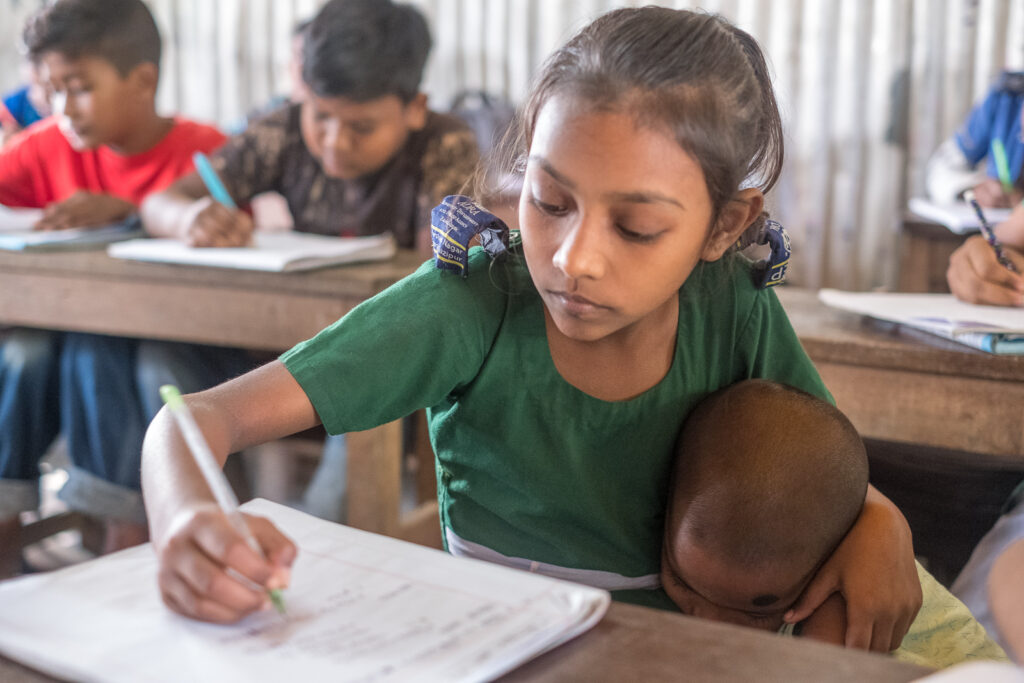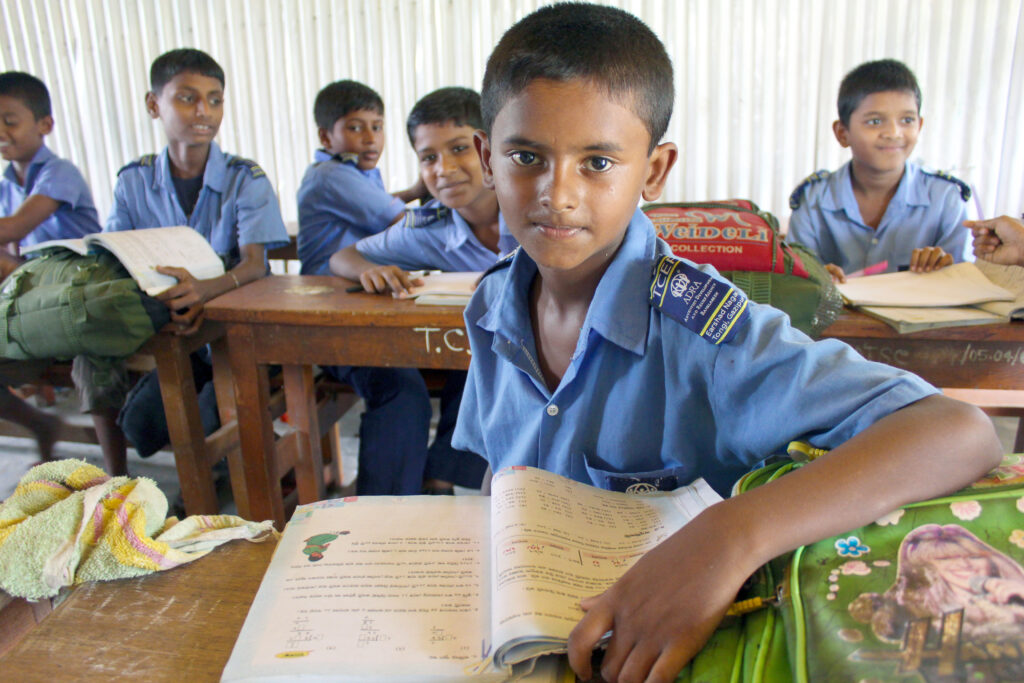During the 2010s and early 2020s, Bangladesh experienced strong urban economic growth, a reduction in poverty rates, and rapid growth in primary school enrolments. Amongst many factors, these changes are linked to Bangladesh’s growing involvement in the global economy, especially in the form of garment factories, and conscious efforts by its government to increase enrolments through its primary education plans.

Although nominally richer and geographically closer to urban job markets than those in rural areas, people in the slums of Dhaka have greater difficulty accessing schooling and have questionable rewards to look forward to at the end of it. The project considers the theory of rates of return to education, but also looks beyond that to consider the factors that impede households from accessing financial and other rewards that supposedly accrue from education. In particular, social connections play an important role in getting jobs and realizing other opportunities; and, unsurprisingly, gender plays a decisive role in deciding boys’ and girls’ futures.
These results were considered in the light of human and social capital theories and ideas about the reproduction of social class through schooling. The project’s goal is to improve the living conditions of slum children in Dhaka city of Bangladesh. The project’s outcome is that the children will successfully complete public primary school and get admitted to high school. The project’s objective is to improve the educational, health, and living conditions of the slum children of Dhaka city in Bangladesh. Accordingly, through the project intervention, 80 children and 80 mothers were directly benefited from the project, as well as 32 external children with educational support.
Chalantika Slum Children Development Project (CSCDP) started its activities on June 15, 2013, at Mirpur-6, Dhaka, the capital city of Bangladesh. The project was designed to address the lack of education and various health problems in the slum area. People in this slum migrated from different parts of Bangladesh due to family financial crises. Parents would often stop their child’s education to involve them in earning money as they are not aware of the importance of education.
Children in this area are malnourished because of their food habits. The mothers are mostly illiterate, and they don’t know about the nutritious values of food. These malnourished children suffer from different diseases, and usually go to the pharmacy or unqualified doctors for treatment. The project targeted this community to improve their living conditions by improving their health, education status, and family situation. All the activities were set so that the children could complete their primary education. The project also gave importance to sustainability and raised awareness among parents and community members by conducting frequent meetings, problem-based workshops, and home visits. The project also made a targeted linkage with the Education department and other local NGOs for sustainability.
A baseline survey had been conducted in the work area at the start of the project in 2013. 50 children, aged 5 – 10 years old and not currently attending school, were identified, and selected from the slum´s most vulnerable families. For a significant number of these children, fathers are no longer present and/or are not supporting the family financially for various reasons. Children are commonly cared for by their mothers, grandparents, or other relatives. The information collected has been used as a basis of comparison at impact assessment and at the end of project evaluation.

ADRA’s Intervention
For child selection, project staff used at least three participatory assessment tools: focus group discussions, household surveys, and observation. Focus group discussions were conducted with children and their guardians in the community to identify their needs. Through this process, staff provided concepts of the project goals and objectives to those interviewed. A house-to-house survey was conducted by project staff to identify the most vulnerable children and their living conditions. This survey has also helped to establish relationships and feedback mechanisms with the guardians. During surveying, each staff member observed and took notes of the settings where the selected children reside.
The project targets slum children, who reside in the Chalantika slum. These children are deprived of their basic needs such as health, education, and vocational skills and are struggling to meet their nutrition needs. They come with their families from different parts of the country for various reasons and live in Chalantika slum’s floating houses and temporary shelters. Most of the time, they stay within the slum to either look after younger siblings, work in the streets collecting recyclable materials, or wandering around with neighboring children while their parents are away working or begging in the streets. Chalantika children are often engaged in the following kinds of labor: collecting waste from streets/markets/bus and railway stations, selling goods at markets, not attending schools, and being forced into- and at risk of being involved in prostitution or other often illegal income-generating activities.
There are 112 children aged 6 – 16 years who were enrolled based on the survey and benefit directly from project activities. Through the project intervention, there are 400 indirect beneficiaries. The project gives priority to those who are really interested to improve themselves through their own participation.
The CSCDP has worked well in its first seven and half years. Primary health care, children’s education, and vocational skills training have all been areas of ADRA Bangladesh’s strategic planning, addressing the issues through an integrated approach. The informal education classes have been helping slum children, giving them the basic language and education skills needed to bridge the gap to formal public education systems. A strategy has been developed with the education department at the early stages of the project to transition children into formal literacy. The process of needs identification and generating solutions with the slum community, as well as the involvement of local leaders, are all processes that ADRA Bangladesh uses to address poverty reduction and to build a good community for the future. This project is a continuation of an existing project funded by the ADRA Czech Republic and can be replicated in other areas of Bangladesh as well. The goal of ADRA Bangladesh, along with the donor support of ADRA Czech Republic, is to ensure a long-lasting impact in the Chalantika community.
Description of Accomplishments
From January 2021 to December 2021, the project reached 112 students and 80 mothers with the objective of improving the education, health, and living conditions of the slum children in Dhaka city. From January 2021 to December 2021, 1,150 education sessions were held on 230 school days, 5 educational sessions/day with 1 government primary school and 2 private High schools. 18,400 nutritious meals were cooked for 230 days and distributed among 80 students, and 4x children’s health checkups were completed with 42 health session classes.
Written By: Ruben Sarker
Photo: © 2022 ADRA Bangladesh
*This article was featured as the Technical Focus in ADRA Asia Regional Office’s quarterly Magazine ADRA Asia Focus Vol 2 | No 2*
Visit the ADRA Bangladesh website to learn more: https://www.adrabangladesh.org/
